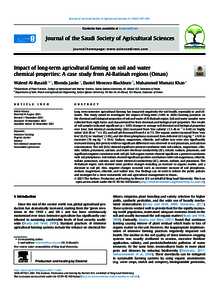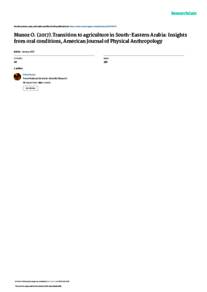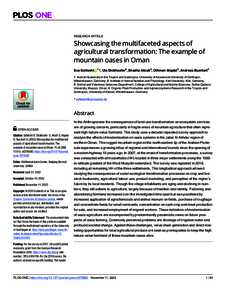وثيقة
Impact of long-term agricultural farming on soil and water chemical properties: a case study from Al-Batinah regions (Oman).
المعرف
DOI: 10.1016/j.jssas.2021.11.002
المصدر
Journal of the Saudi Society of Agricultural Sciences. v. 21, 6, p. 397-403
المساهمون
الدولة
Saudi Arabia.
الناشر
King Saud University.
ميلادي
2022-09-01
اللغة
الأنجليزية
الموضوع
الملخص الإنجليزي
Long term intensive agricultural farming has impacted negatively the soil health, especially in arid climates. This study aimed to investigate the impact of long-term (1993 to 2020) farming practices on the chemical and biological properties of soil and water of Al-Batinah region. Soil and water samples were collected from eight farms and characterized for their chemical and biological soil properties. The results of soil samples indicated significant (p ≤ 0.05) changes in average soil chemical and biological properties over time. Soil electrical conductivity (ECe) increased from 'low salinity' (1.5 dS m−1 ± 0.49) to 'highly saline' (6.6 dS m−1 ± 1.35), and soil pH decreased from 8.4 to 7.5. The organic matter increased from 'very low' (0.2%) to 'medium' (1.9%), and the Olsen phosphorus increased from deficient (6.5 mg kg−1 ± 0.9) to excessive (76 mg kg−1 ± 10.4). Sodium, magnesium, chloride, and sulfate ions were also significantly increased during this period, while no significant differences was observed in soil potassium, and calcium concentration. The soil (ECe) showed significant positive correlation with soil sodium, magnesium, chloride, sulfate, potassium, calcium, and water electrical conductivity (EC), nitrate, sodium, potassium, and significant negative correlation with soil pH. Soil organic matter showed significant a positive correlation with soil phosphorus. Soil sodium showed significant positive correlations with soil magnesium, chloride, sulfate, potassium, calcium, and water electrical conductivity (EC), nitrate, sodium, and potassium. The Al-Batinah region soils showed some positive changes including an increase in organic matter, and a decrease in soil pH. Also, negative changes occurred such an excessive increase of soil phosphorus, sodium, magnesium, chloride, and sulfate ions. Our findings can be used to inform the public policies and strategies for a more sustainable soil and agricultural management in Oman.
ISSN
1658-077X
قالب العنصر
مقالات الدوريات



